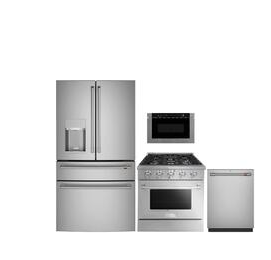DIFFERENCE BETWEEN INDUCTION AND CERAMIC HOB [PROS AND CONS]

The popularity of ceramic and induction hobs has surpassed that of conventional gas cookers. Of course, there are customers for each kind, but it's critical to understand the difference between induction and glass-ceramic.
Because of this, we think it's important to examine the characteristics of both induction and glass-ceramic plate types. Which stove is ideal for your kitchen? Induction or a ceramic hob?
Difference between an induction hob and ceramic hob

The cost is the first factor to take into account when comparing induction and ceramic hobs. For starters, induction hobs cost twice as much as glass-ceramic hobs, if not more. This is due to the revolutionary cooking mechanism that induction hobs have.
When deciding between ceramic plate and induction, the cooking time must also be taken into mind. In this instance, cooking your meal using induction plates only takes half the time.
The operation, energy use, and cleaning simplicity are three other key distinctions. The many attributes of ceramic and induction hobs are contrasted here.
Ceramic hobs

- Various ceramic hobs exist, but they all operate using an electric cooking system built around a flat, vitreous ceramic plate.
- It is distinguished by both a very high thermal conductivity and a high thermal conductivity.
- The ceramic hob is composed of two or even four stove-like circular resistances.
- These stoves are turned on by pressing a finger button, which also controls the stove's power.
- They work with a variety of containers.
- Glass-ceramic plates provide gradual heating, making them perfect for cooking dishes that do not need instant heating.
- The glass-ceramic plates' surface is simple to maintain.
- Additionally, the effectiveness of the glass-ceramic surface is unaffected by contaminants on its surface.
Induction hobs

- High-power magnets that are driven by electricity are used in induction hobs.
- Heat is produced on the metal surface above the magnet as a result of the development of a magnetic field.
- The induction plates feature a smooth ceramic glass surface similar to the glass-ceramic plates, and a button controls even the heat regulation.
- Induction hobs heat the metal surface twice as quickly as ceramic hobs, which is a significant distinction between the two types of hobs.
- Induction hobs use half the energy of any form of the ceramic hob in terms of energy usage.
- An induction hob also makes it possible to regulate the temperature at which food is cooked precisely.
- Additionally, the surface cools down rapidly once the induction cooktop is switched off, making it considerably safer and simpler to clean.
Choose the cooktops that suit your needs

The distinction between glass ceramic and induction must constantly be kept in mind. However, it is not the only pertinent factor to take into account. We have examined the features of both kinds of plates in this comparison of induction vs. glass-ceramic plates.
You must, however, take into account both your family's demands and your own. In other words, whether you pick an induction or ceramic plate cooktop, it must meet your demands and provide you with the finest performance.
After choosing between an induction or ceramic cooktop, you must evaluate other crucial factors including size, design, and performance. All of this will depend on your demands and, of course, the price.
You can only do this if you want to get the induction hob with the best price/quality ratio or, if necessary, the ceramic hob with the best fit.
Energy consumption: ceramic hob vs induction

It's crucial to consider energy use while selecting a stove. In this instance, induction plates use between 80% and 90% of the available energy.
Glass-ceramic plates use around 50% more energy than other types of plates. In other words, compared to ceramic hobs, induction hobs use between 30 and 40% less energy.










